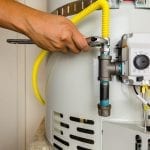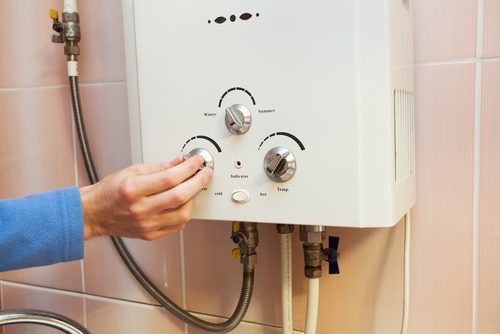Key Advice on Maintaining Your Home's Hot Water System
Start NowWe have unearthed the article pertaining to What Kind of Maintenance Do Water Heaters Need? down the page on the web and accepted it made perfect sense to relate it with you over here.

Warm water is vital for day-to-day comfort, whether it's for a revitalizing shower or washing dishes. To guarantee your hot water system runs effectively and lasts longer, normal upkeep is vital. This short article offers functional tips and insights on just how to keep your home's hot water system to avoid disruptions and costly repair work.
Introduction
Preserving your home's hot water system might seem overwhelming, however with a couple of straightforward steps, you can ensure it runs smoothly for many years ahead. This guide covers every little thing from understanding your hot water system to do it yourself maintenance suggestions and understanding when to call in expert assistance.
Importance of Preserving Your Warm Water System
Regular maintenance not just expands the life expectancy of your warm water system yet also guarantees it operates successfully. Disregarding upkeep can lead to decreased effectiveness, higher power expenses, and even premature failing of the system.
Signs Your Warm Water System Demands Maintenance
Knowing when your warm water system needs attention can protect against major problems. Look out for indicators such as inconsistent water temperature, unusual noises from the heating system, or rustic water.
Flushing the Hot Water Heater
Flushing your water heater eliminates sediment build-up, boosting performance and lengthening its life.
Checking and Changing Anode Rods
Anode rods prevent deterioration inside the container. Examining and changing them when worn is crucial.
Facility Concerns Needing Professional Assistance
Instances consist of major leakages, electric troubles, or if your water heater is continually underperforming.
Regular Expert Upkeep Conveniences
Professional maintenance can consist of thorough inspections, tune-ups, and guaranteeing compliance with safety requirements.
Inspecting and Adjusting Temperature Settings
Adjusting the temperature level settings makes sure optimum performance and safety.
Do It Yourself Tips for Maintenance
You can execute several upkeep tasks yourself to maintain your hot water system in leading problem.
Checking for Leaks
On a regular basis evaluate pipelines and connections for leakages, as these can lead to water damages and higher expenses.
Recognizing Your Hot Water System
Before diving into upkeep jobs, it's practical to recognize the basic parts of your hot water system. Commonly, this consists of the water heater itself, pipelines, anode rods, and temperature controls.
Month-to-month Upkeep Tasks
Routine month-to-month checks can help capture minor issues before they intensify.
Checking Stress Relief Valves
Checking the pressure relief valve ensures it operates correctly and avoids too much pressure build-up.
Insulating Pipes
Insulating hot water pipes lowers warmth loss and can save power.
When to Call a Specialist
While DIY upkeep is valuable, some concerns require expert experience.
Conclusion
Normal maintenance of your home's warm water system is vital for efficiency, long life, and cost savings. By adhering to these suggestions and knowing when to look for professional assistance, you can ensure a trusted supply of warm water without unforeseen disturbances.
How to Maintain an Instant Hot Water Heater
Before tinkering with your hot water heater, make sure that it’s not powered on. You also have to turn off the main circuit breaker and shut off the main gas line to prevent accidents. Also turn off the water valves connected to your unit to prevent water from flowing into and out of the appliance. 2. When you’re done, you have to detach the purge valves’ caps. These look like the letter “T†and are situated on either side of the water valves. Doing so will release any pressure that has accumulated inside the valves while at the same time avoid hot water from shooting out and burning your skin. 3. When the purge valves’ caps are removed, you have to connect your hosing lines to the valves. Your unit should have come with three hoses but if it didn’t, you can purchase these things from any hardware or home repair shops. You can also get them from retail stores that sell water heating systems. Read the user’s manual and follow it to complete this task properly. When the hosing lines are connected, open the purge port’s valves. 4. You should never use harsh chemical cleaners or solutions when cleaning your unit. Make use of white vinegar instead. It should be undiluted and you’ll probably use about 2 gallons. 5. Now flush your water heater. This task should probably take about 40 minutes. We can’t give you specific directions for this because the procedure is carried out depending on the type, model and brand of your heater. With that being said, refer to the user’s manual. 6. When you’re done draining the unit, you have to turn off the purge port valves again. Remove the hosing lines that you earlier installed on each of the water valves. Put the valve caps (purge port) back in their respective places and be very careful so as not to damage the rubber discs that are found inside these caps. 7. Now that everything’s back in place, check your user’s manual again to find out how to reactivate your water heating system. 8. Once it is working, turn one of your hot water faucets on just to let air pass through the heater’s water supply pipes. Leave the tap on until water flows smoothly out of it. https://www.orrplumbing.com/blog/2014/september/how-to-maintain-an-instant-hot-water-heater/

I ran across that article about How to Maintain Your Water Heater & Prolong its Life while surfing around the search engines. For those who enjoyed reading our blog posting if you please do not forget to pass it around. We treasure reading our article about Water Heater Maintenance Tips You Can't Afford to Forget.
Click